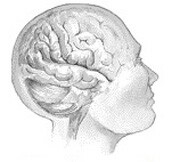
THURSDAY, Feb. 13, 2014 (HealthDay News) — Head and neck injuries may triple the odds that a young adult or child suffers the leading form of stroke, new research suggests.
While strokes remain relatively rare in younger people, they do occur, one expert said.
“Two thirds of strokes occur in people over the age of 65, but one third of strokes occur in those under the age of 65,” said Dr. Richard Libman, chief of the division of vascular neurology at North Shore-LIJ Health System in Manhasset, N.Y.
“Many strokes occur in people in the prime of their lives, depriving them of quality of life, and depriving society of their contributions,” added Libman, who was not involved in the new study. “More research is needed into the causes and appropriate treatments for young people with stroke.”
In the study, researchers at the University of California, San Francisco, analyzed the medical records of 1.3 million people younger than 50 who were treated for head and neck injuries in emergency trauma departments.
They found that 145 (or 11 of every 100,000) patients suffered an ischemic stroke within four weeks of the injury. According to the American Stroke Association, 87 percent of strokes are ischemic strokes, which are caused by blocked blood flow in the brain.
The average age of patients with head and neck injuries who suffered a stroke was 37, compared with 24 among those who didn’t have a stroke. About 48 in 100,000 young adults and 11 in 100,000 children with a head or neck injury later suffered a stroke, the team said.
According to the study authors, about two million people are treated in U.S. trauma departments for head and neck injuries each month, which suggests a monthly rate of 214 younger adults and children who suffer an ischemic stroke following such injuries.
The findings are slated for presentation Thursday at the American Stroke Association’s International Stroke Conference in San Diego.
“These findings are important because strokes after trauma might be preventable,” lead author Dr. Christine Fox, assistant professor of neurology at UCSF, said in an ASA news release.
The links between head and neck injury and stroke aren’t clear. The authors note that such injuries can cause tears in blood vessels that lead to the brain. These tears can lead to blood clots that can trigger a stroke. If tears in these blood vessels can be diagnosed at the time of the injury, patients could be given anti-clotting drugs to prevent stroke, they said.
However, while 10 percent of the patients in this study had this type of tear, not all of them were diagnosed with it before their stroke, the investigators said.
Libman agreed that the “mechanism” linking injury and later stroke “remains a mystery at this point.”
Dr. Robert Glatter is director of sports medicine and traumatic brain injury at Lenox Hill Hospital in New York City. He believes that “the key take-home point from this study is that strokes that occur after trauma to the head and neck may be preventable, essentially by developing a greater awareness of this injury, along with prompt attention to diagnosis and treatment.”
“Although the absolute numbers of patients affected by a potential stroke seem small on a national level, the emotional, physical and financial costs are devastating, as the average age of patients suffering a stroke in this study was 37 years of age,” Glatter said. “Prompt treatment … may be lifesaving and reduce disability in the long run.”
Findings presented at medical meetings are typically considered preliminary until published in a peer-reviewed journal.
More information
The American Academy of Family Physicians has more about head injuries.
Copyright © 2025 HealthDay. All rights reserved.

